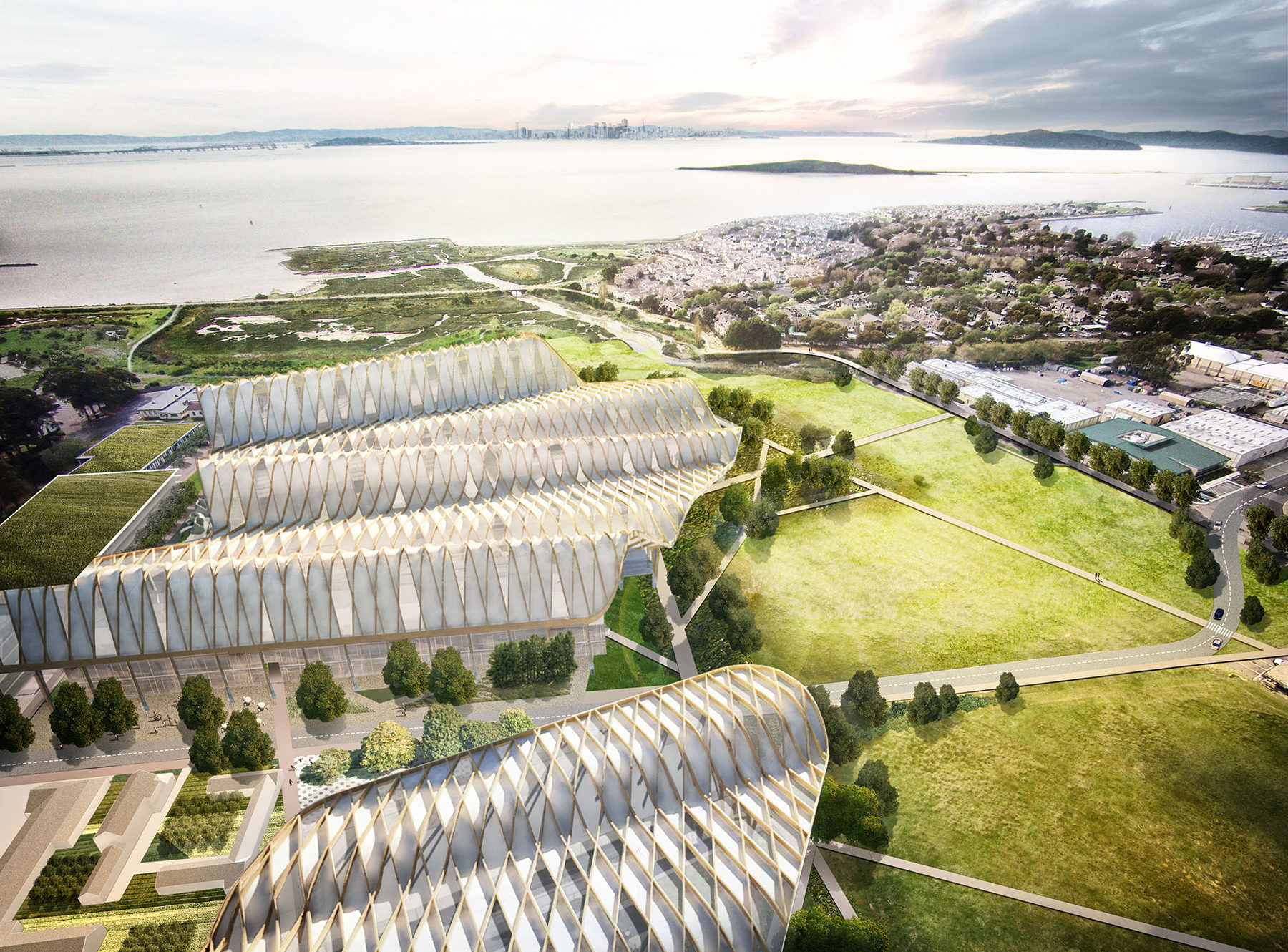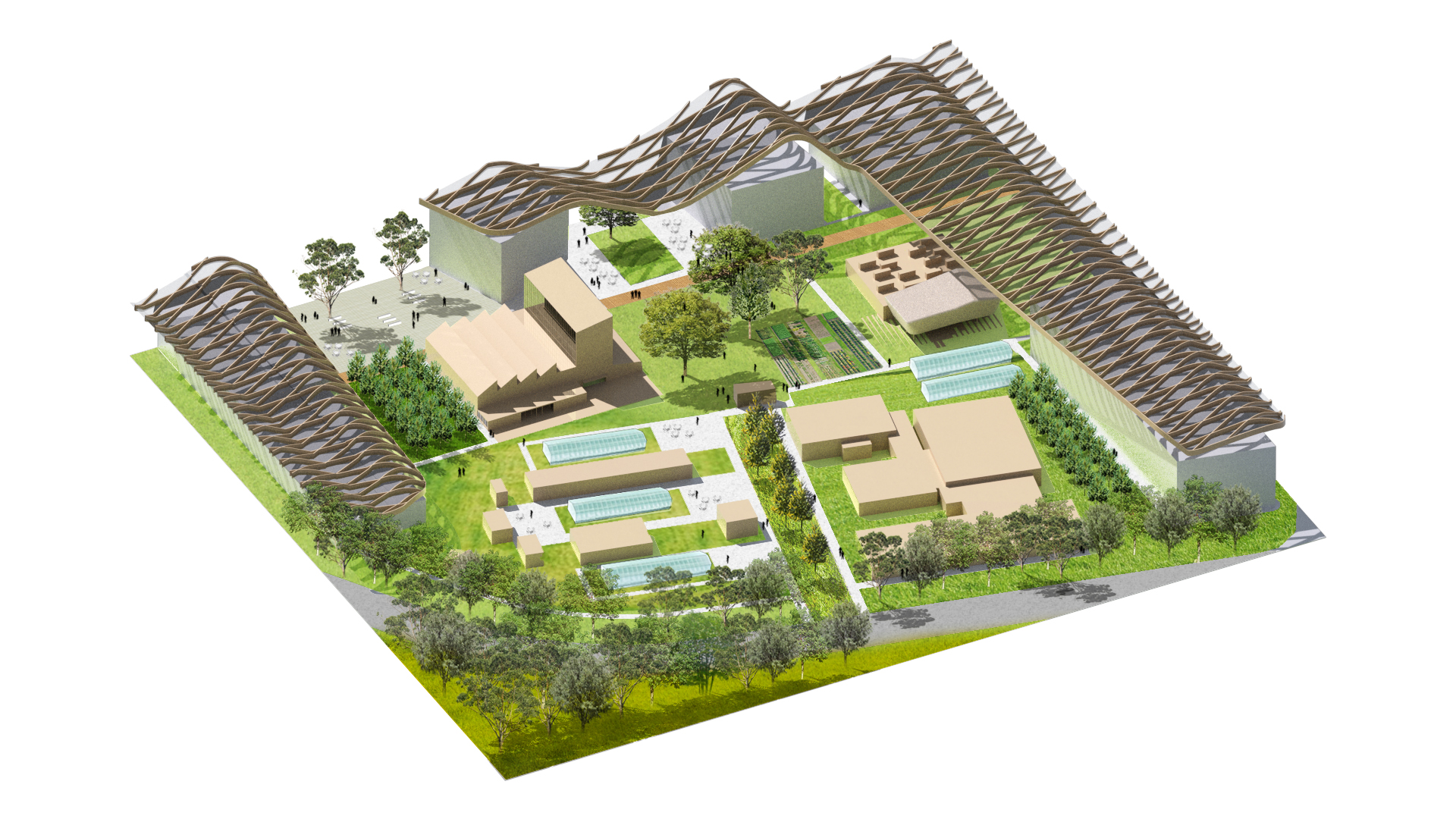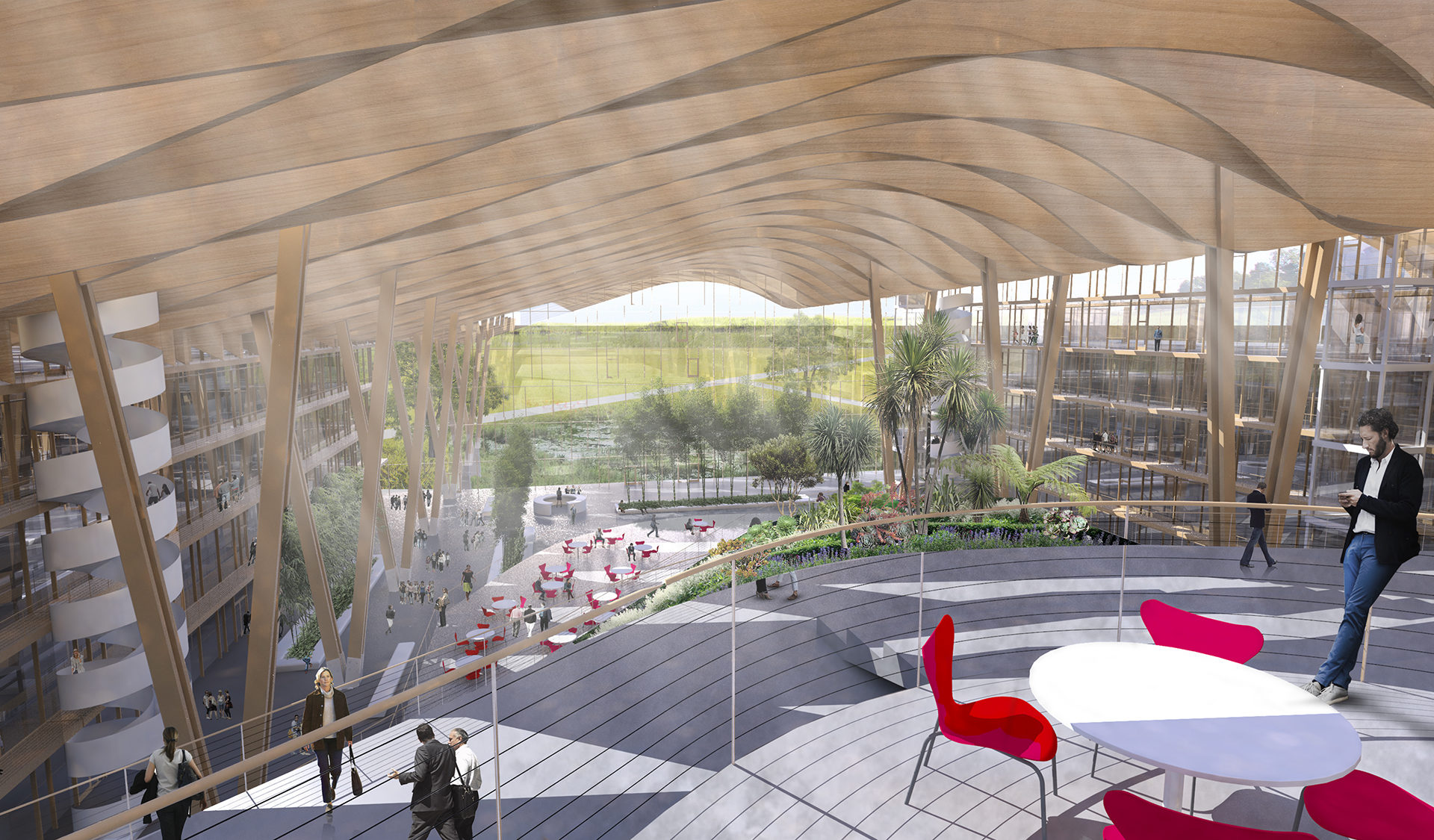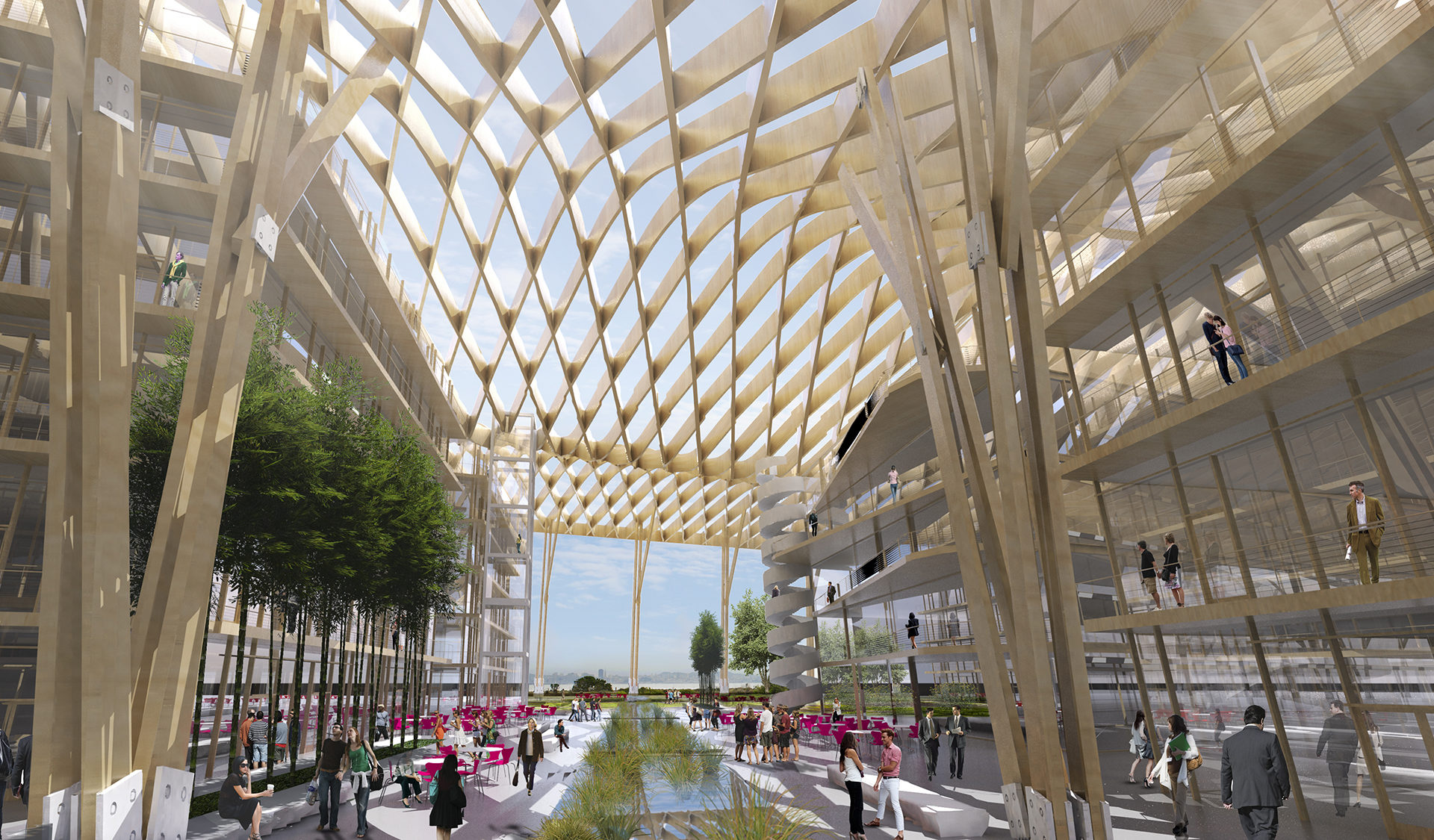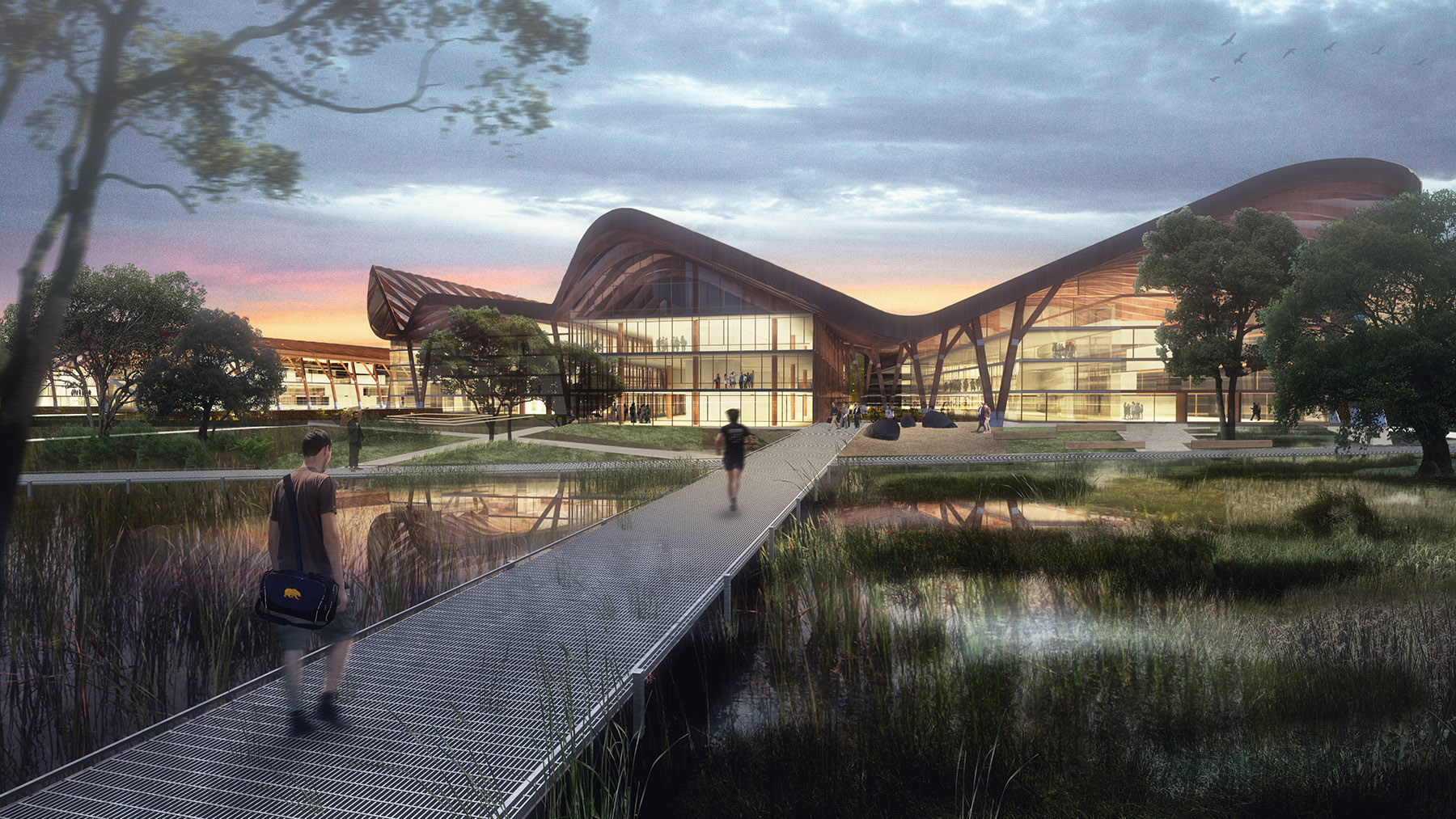- 2015 AIALA Next LA Award
Berkeley Global Campus
- Location Richmond, CA
- Type Education
- Area 5.4 Million SF
- Completion 2015
In collaboration with Greg Lynn FORM and Tom Leader Studio, kdA was one of five firms selected to design concepts for a master plan for a UC Berkeley satellite campus dedicated to supporting the next century of global research initiatives and public/private partnerships anticipated by the large California university and nearby national laboratory. The campus is to be developed on a historic field station operated by the University and is set in a restored wetlands and grassland at the edge of the San Francisco Bay.
The Berkeley Global Campus at Richmond Bay is a 134-acre site with a planned 5.4 Million SF of research, educational and support buildings. The new campus will house University of California, Berkeley and Lawrence Berkeley National Laboratory programs conducting research and development activities in a wide range of science, engineering, and technology fields.
kdA’s master plan allows for a high degree of flexibility in future development by creating spaces able to intelligently adapt to the evolving demands of research agendas, both within the academy and industry. kdA looked to traditional campus design for inspiration and focused on three essential characteristics: the relationship between buildings and landscape through the use of quadrangles and colonnades; the connections between buildings, winter gardens and larger, hanger-like spaces; and the social spaces adjacent to buildings, including the historic field station building and landscape elements. Extensive studies by landscape architect Tom Leader Studio examined the impact of long-term water level change anticipated for the region.
A series of dedicated study and research buildings—their widths optimized for natural lighting and ventilation and their five- to six-story volumes constructed by conventional means or via cross-laminated timber columns and floor framing—comprise the primary planning modules of the new campus. Cores located at the perimeter allow for the series to be subdivided vertically or horizontally between single or multiple departments or tenants. Circulation is located primarily at exterior edges in dialogue with the spaces beyond.
Connecting these conventional (and economical) research buildings are more flexible, hangar-like volumes that resemble the warehouse and factory typologies, long recognized as home for innovation in the Bay Area. These highly sought-after spaces can be extended to support specific research efforts, providing flexibility for innovative research agendas. Additionally, their open, semi-conditioned multistory interiors include utility cores, but the costs for specific fit-out can be borne by tenants, allowing development funds to be stretched further.
- 2015 AIALA Next LA Award
